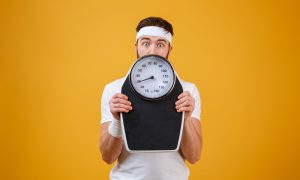Simple And Effective Ways Of Tracking And Monitoring Your Weight Loss Journey
|
|
If you’re thinking about losing weight this year then rest assured that you’re most certainly not the only one, nor will you be the last, not by a long shot. Thousands, even millions in fact, of people struggle with their weight for one reason or another, and unfortunately it usually comes down to their body fat levels and percentages. Losing weight is far from easy, in fact, it can be a downright nightmare for many of us. In one of life’s seemingly many cruel and ironic twists, not only do we tend to enjoy eating and drinking produce that is bad for us and promotes fat gain, but it’s also far easier for us to gain fat than it is to lose it. Now, we could sit here and stew about just how unfair it is, or we could be more productive and could look for ways of losing weight and transforming our bodies. If you’ve decided you could stand to lose a few pounds, possibly even more than that, and would like to do so over the next few months before the summer really arrives, then tracking and monitoring your progress should be at the forefront of your mind. Tracking and monitoring our weight loss journeys is not only practical, it is also productive as it can help motivate and inspire us to continue as well. Here’s a look at a few simple and effective ways of tracking and monitoring your weight loss journey.
Track and log your calories

Now, when you really delve deep into anatomy and physiology, losing weight is extremely complex and understanding every element of it would be near impossible. Never fear however, because on the surface, losing weight is simply a matter of calories in versus calories out. Each and every single one of us has a daily calorie requirement in our current states. This number is basically the number of calories that the body requires to keep itself in its current state. A calorie is a unit of energy, and to maintain itself the body needs X amount of energy or else it will lose weight. You can easily work out your daily calorie requirements online using various pieces of software, and once you do, then you know how many calories you will require each day in order to lose weight. Say for example, a person requires 2500 calories per day. If that person were to consume 2500 calories, they would basically stay the same. If however, they consumed 2000 calories, they would create a deficit of 500 calories, and so the body, worried it was not getting enough energy, would dig into its body fat reserves and burn fat, converting that into energy. By logging and tracking calories, either writing them down or using apps and software, we can get an idea of exactly how many calories we’re consuming each day. Make sure you log everything, as although you may not think it, something as simple as a couple of pieces of fruit could have far more calories in them than you realised. By logging calories, you aren’t leaving things to chance and you know exactly how many you’re consuming, and how many you need to create a deficit in order to lose weight.
Take photos

Though it may not be pleasant for you, having your photo taken at the beginning of your journey, ideally you really should as photos are fantastic ways of tracking and monitoring your progress and really seeing how far you’ve come and what improvements you’ve made. Make sure you take a photo from the front, side profile, and back, and try to take one in the same type of lighting each time. Not only that, but either set your camera up in the same spot, or ask the person taking your photos to stand in the exact same spot in the exact same room every time you take progress photos as that way you can’t blame things such as lighting, camera angle, distances etc. Take weekly, fortnightly, or even monthly progress pics and hopefully, if you’re sticking to your plan, you’ll be amazed by the progress you’ve made, and seeing it in picture form will really emphasize this point.
Items of clothing
Another great way of tracking your progress is to wear, or attempt to wear, items of clothing that you haven’t worn for a while due to them being too small/tight or simply unflattering. If you have a T-shirt in a size smaller, try it on and see how it fits. The same goes with jeans, try jeans or trousers on, see if you can button them up, and if you can, are they comfy? After a few weeks, try the same items of clothing on, and again, see how they look and feel. There’s nothing greater than struggling, or even failing, to button up a pair of jeans, only to finally be able to fit into them a few weeks later. Once you’re able to fit into them and button them up, your next objective will be to keep going until you can not only fit into them, but also feel comfortable in them without them feeling tight and restrictive.
Take measurements

This is arguably the most effective way of really tracking and monitoring your progress on your weight loss journey as the tape measure simply doesn’t lie. Before you begin, measure your waist, your arms, your chest, your back, etc and make sure to write these measurements down. Next, set aside a date for your next measurement reading, and once again, as long as you’ve stuck to your plan, all of the numbers should have gone down, especially your waist. Again, write these numbers down and keep going. Referring back to these numbers, which hopefully will have continuously gone down after each measurement will serve as a fantastic motivational booster and will help spur you on to keep going until you reach your goal.














